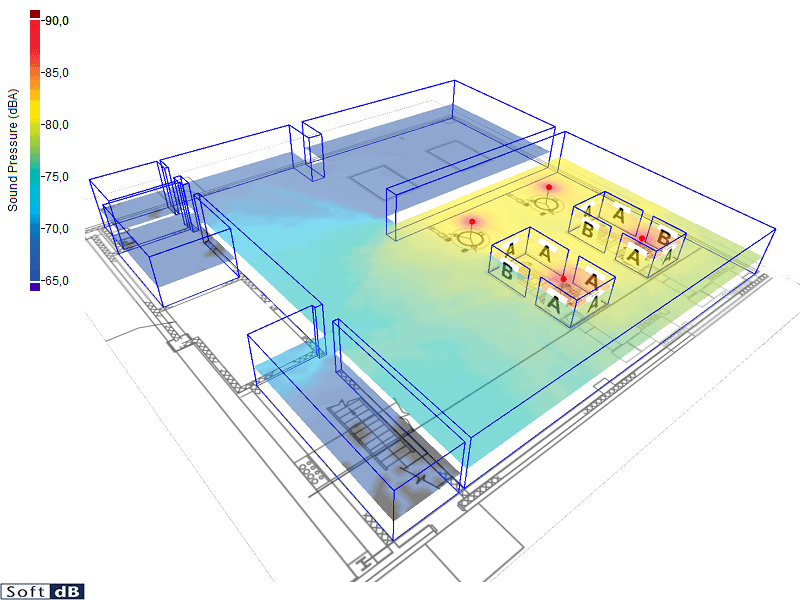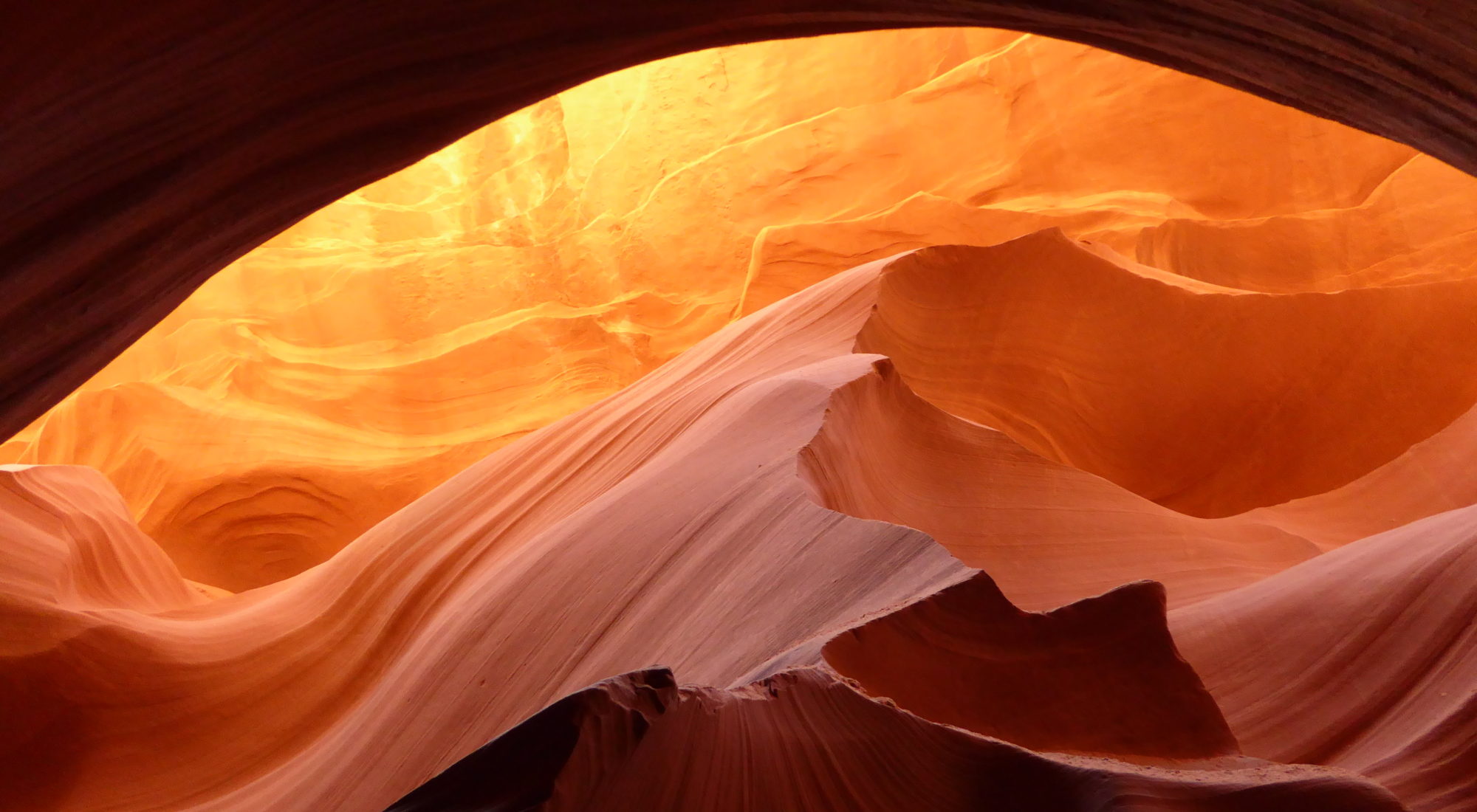 Sonocat is a revolution for sound measurements. With Sonocat you can measure Sound Absorption, 3D Sound Intensity, Sound Power, Particle velocity, Sound Transmission and Sound Pressure with one single device. The Sonocat is an advanced acoustic measurement instrument designed for capturing and analyzing the most complex sound fields. Featuring a spherical array of eight MEMS microphones and integrated acquisition hardware.
Sonocat is a revolution for sound measurements. With Sonocat you can measure Sound Absorption, 3D Sound Intensity, Sound Power, Particle velocity, Sound Transmission and Sound Pressure with one single device. The Sonocat is an advanced acoustic measurement instrument designed for capturing and analyzing the most complex sound fields. Featuring a spherical array of eight MEMS microphones and integrated acquisition hardware.
Insul 10 is released
We are very excited to release INSUL Version 10.
The INSUL development team has completed a ‘first principles’ review of INSUL’s algorithms for Version 10, updating most of the core prediction routines. To support this, the team has also carried out an extensive validation study to assess the accuracy of the new prediction routines.
New features include Quad Models for sound insulation predictions of walls and ceilings with up to three separate air cavities and an all new wave-based algorithm for glazing predictions which models the modal response of double, triple and quad glazing
Other new features of Version 10 include:
- Save and recall custom illustration views
- New frame types for generic, continous test frames
- Refined sound insulation models for Single, Double, Triple
- Updated ISPL models for Double, Triple
- Updated rain noise model for Double
- Updated bridging calculations, sensitive to frame properties
- Refined material properties for concrete, gypsum board and glazing
We will be sharing more detailed information about Quad models and wave-based glazing algorithms soon. In the meantime, you can learn more about the new version INSUL-Version 10
If you would like a trial licence for Version 10 so that you can try out the new features first hand, please contact Vibraphon at info@vibraphon.se.
Insul 10
Insul 10 will be released in November. On 23 October the price of Insul will be increased. All orders made before 23 October 2023 will have the current lower price. Please note that 6 months of free updates are included in the price of an Insul license. This means that a free upgrade to Insul 10 will be included in orders of Insul made before 23 October 2023.
ENC 6.0
The biggest news with ENC 6.0 is module 9 which contains an SEA module (Statistical Energy Analysis). With SEA you can calculate the propagation of vibrations and structure-borne noise in structures. The SEA module can handle up to 50 subsystems and 50 junctions. There are 25 subsystem types (listed below) to choose from and 39 different junction types illustrated in the next page), with the ability for users to add their own subsystem types if desired. Subsystem types include corrugated and honeycomb sandwich plates, cylinders, rectangular and cylindrical spaces as well as rectangular and circular platesand partitions.
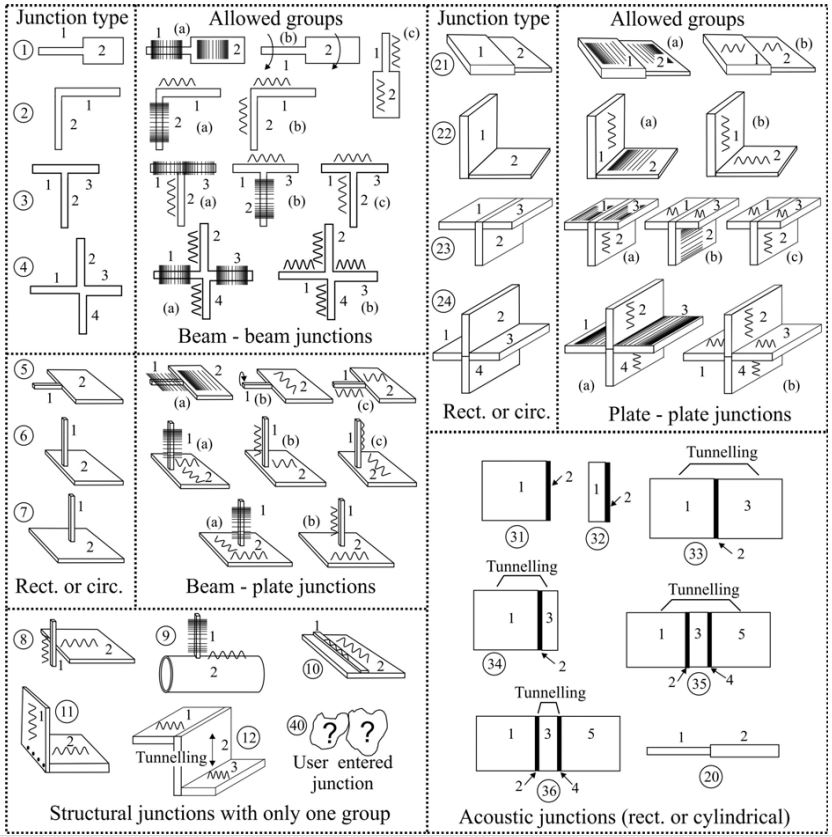
Insul release 9.020
INSUL Release 9.0.20, July 2019, is now available.
The update comprises tweaks and bug fixes for both Windows and Mac.
Changes include:
Improved Composite TL Calculator functionality in Mac version
Fixed bug in Double Floor (ISPL) calcs with no cavity infill
Minor printing improvements for Test Panel sizes
Improved Materials Editor closing routines
Revised update-checking routines to prevent hanging
Updated illustrations of cavity infill on file open
Bug fix for rain noise models for orthotropic panels
Insul release 9.019
Release 9.0.19 May 2019
* Updated illustration dimensions for Ceilings, Floors and Roofs
* Fixed bug with resetting material lists upon Materials Editor close
* Fixed illustration bug for plotting CompositeSteelFloor systems
* Updated Indoor/Outdoor Calculator for improved printing of third octave band tables
* Fixed Composite TL Calculator printing bug for single octave tables
* Increased Indoor/Outdoor Calculator area and volume size limits
* Improved recollection of model details for PIR and similar frame types
* Tidied Porous tab layout to prevent overlapping lists
* Updated display for Custom materials to show in blue font
* New items added to INSUL Materials list
* New items added to INSUL Floor Cover list
* New items added to INSUL Absorption list
* Minor amendments to printouts to better handle very long descriptions
* Minor translation updates for German and French
Iris at the new Philharmonie de Paris
IRIS at the new Philharmonie de Paris
IRIS was recently used by the MDA team at the commissioning of the new Philharmonie de Paris. IRIS proved to be an invaluable tool, achieving a full set of detailed measurements under challenging circumstances and a tight time frame (50 separate source/receiver measurements in 5 hours).
”IRIS performed flawlessly throughout the commissioning and the 3D rays enabled investigation of things instantly on site that would never have been possible with traditional measurement systems. The design of the hall is groundbreaking and being able to walk away with a 3D representation of the sound field in each position will also be invaluable for more detailed analysis in the future ” – Chris Day – Project Director
More about the measurements in the Philharmonie de Paris PARIS – IRIS
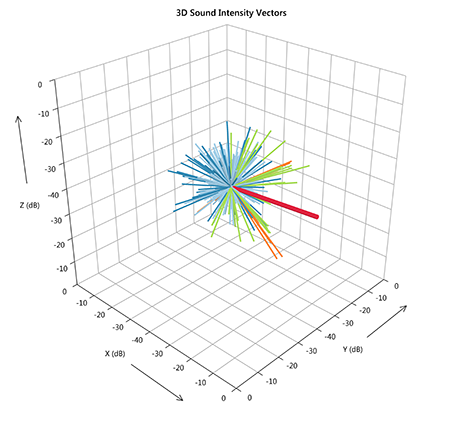

IRIS is a new measurement system that promises to provide a dramatic step forward in being able to understand the acoustics of rooms. The system comprises a tetrahedral microphone that can resolve the sound field into different directions, and software that can analyse the signals from the four microphones and present the information in simple yet elegant way that aids ones understanding of the behaviour of the sound field.
- IRIS is an affordable software and hardware 3D impulse response measurement system
- Interactive 3D rotation and zoom
- 3D colour-coded representation of sound rays
- Length indicates relative sound intensity level, angle is the ray direction, and colour represents time of arrival
- Specific angle and level information for individual rays for detailed analysis
- Traditional omnidirectional waveform views
- Broadband and octave band filtered views
- EDT, T20, T30, D50, C80, Ts in octave band according to ISO 3382-1:2009
- LF
- G coming soon
More info in Products – IRIS
dBSea
dBSea – Prediction of underwater noise
Despite what most people think the sea below surface is not very quiet. A lot of the sound sources are natural and is part of the background noise in the sea. Examples of natural noise sources are rain, interaction between wind and waves and also vulcanic activity can cause noise on far distance.
Many forms of marine life depend on sound for their communication, navigation and development. Noise generated by man can obstruct these vital functions and biologists are concerned about both physiological disorders as disorders in animal behavior. Especially in marine mammals, many species have very sensitive hearing. Noise generated by man in underwater environments include noise from ship traffic, pile driving and seismic surveys with impulse sources. EU Marine Directive descriptor 11 dictate that noise in the seas must not harm marine life. dBSea is a tool to comply with this Directive.
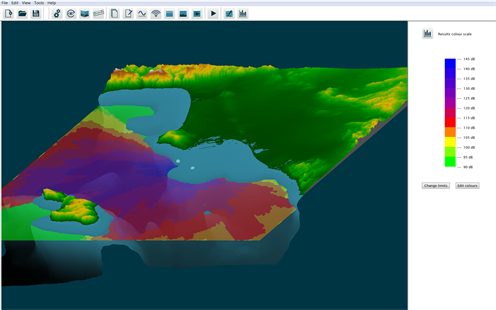
dBSea is a software for prediction of underwater noise. It uses several different prediction models and the user have full control over which to use depending on current application. The 3D model is built by importing bathymetry data and placing noise sources in the environment. Each source can consist of equipment chosen from either the standard or user defined databases. Noise mitigation methods may also be included. The user has control over the seabed and water properties including speed of sound profile (how the speed of sound changes with water depth), temperature, saltinity and current.
Noise levels are calculated throughout the entire project area and displayed in 3D. To examine results in more detail, levels may be plotted in cross sections or a detailed spectrum may be extracted at any point in the 3D calculation area.
More info about dBSea under products/dBSea
BNAM eng
Vibraphon was present at BNAM in Stockholm 20-22 June.
One paper was presented, ”Using Wave Based Geometrical Acoustics (WBGA) to investigate room resonances”. The paper was written together with Pemard.
Rap-One II eng
New! RAP-ONE II
We proudly present a completely new version of RAP-ONE.
RAP-ONE is released in a completely new version with new calculation algorithm (pyramid tracing) and a new 3D interface. It is still the same easy-to-use software that has made RAP-ONE to a popular software for noise mapping Indoors and room acoustic studies.
